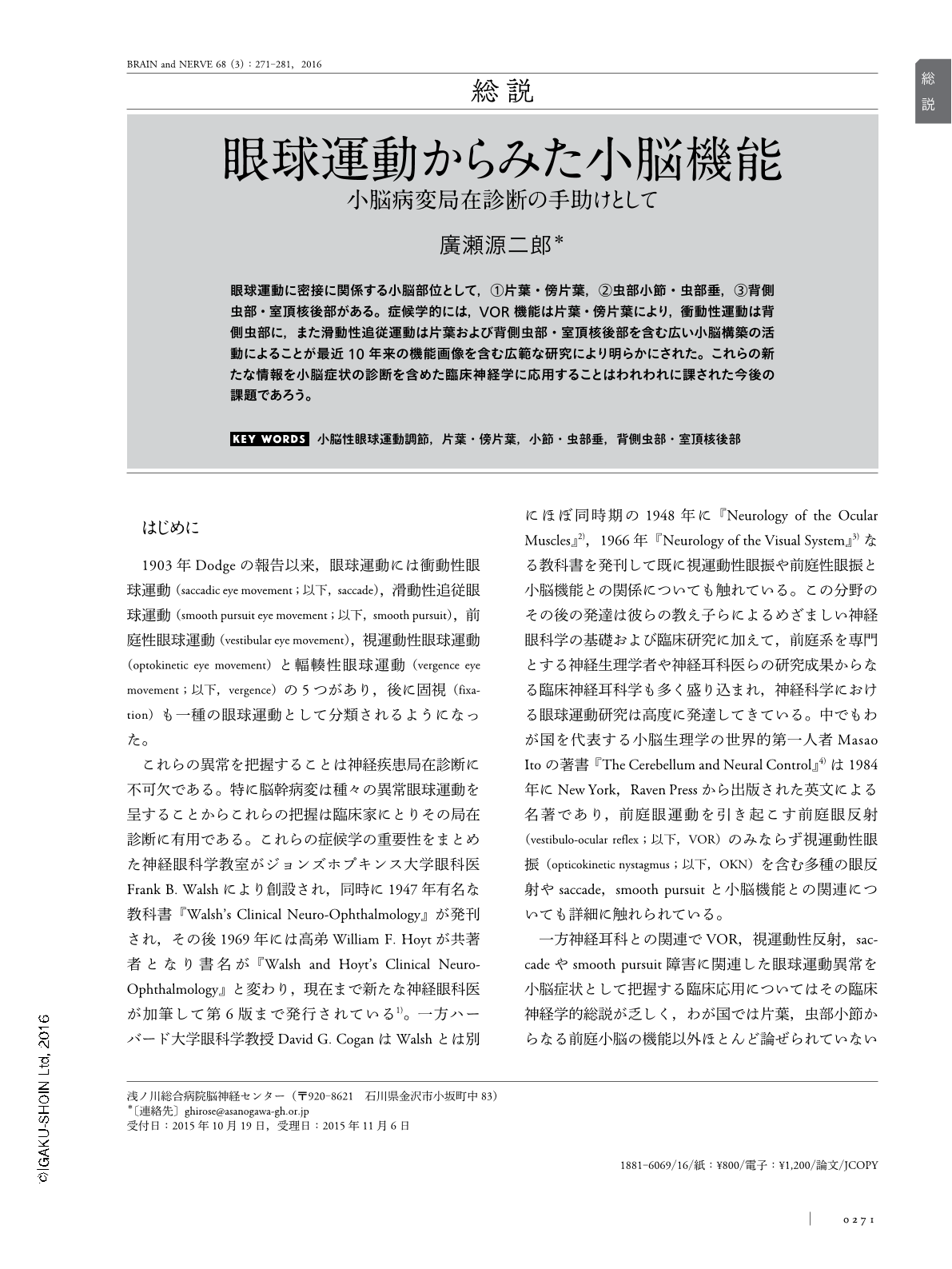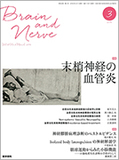Japanese
English
- 有料閲覧
- Abstract 文献概要
- 1ページ目 Look Inside
- 参考文献 Reference
眼球運動に密接に関係する小脳部位として,①片葉・傍片葉,②虫部小節・虫部垂,③背側虫部・室頂核後部がある。症候学的には,VOR機能は片葉・傍片葉により,衝動性運動は背側虫部に,また滑動性追従運動は片葉および背側虫部・室頂核後部を含む広い小脳構築の活動によることが最近10年来の機能画像を含む広範な研究により明らかにされた。これらの新たな情報を小脳症状の診断を含めた臨床神経学に応用することはわれわれに課された今後の課題であろう。
Abstract
Over the last decade, substantial information on cerebellar oculomotor control has been provided by the use of sophisticated neuroanatomical, neurophysiological, and imaging techniques. We now know that an intact cerebellum is a prerequisite for normal oculomotor performance. This review clarifies the current knowledge on structure-function correlations of the cerebellum in relation to ocular movements and allows them to be applied to topographical diagnosis of cerebellar lesions. The cerebellar regions most closely related to oculomotor function are: (1) the flocculus/paraflocculus for VOR suppression, cancellation, smooth pursuit eye movement and gaze-holding, (2) the nodulus/ventral uvula for velocity storage and low frequency prolonged vestibular response, and (3) the dorsal oculomotor vermis (declive VI, folium VII) and the posterior portion of the fastigial nucleus (fastigial oculomotor region) for saccades and smooth pursuit initiation. Symptomatically, defects in the flocculus/parflocculus cause saccadic pursuit, downbeat nystagmus, and impairments to visual suppression of the VOR. Lesions of the nodulus/uvula reveal as periodic alternating nystagmus. Lesions of the oculomotor vermis and the fastigial nucleus can induce saccadic dysmetria, while fastigial nucleus lesions may also cause ocular flutter/opsoclonus. A detailed knowledge of cerebellar anatomy and the physiology of eye movements enables localization of lesions to specific areas of the cerebellum.
(Received October 19, 2015; Accepted November 6, 2015; Published March 1, 2016)

Copyright © 2016, Igaku-Shoin Ltd. All rights reserved.


